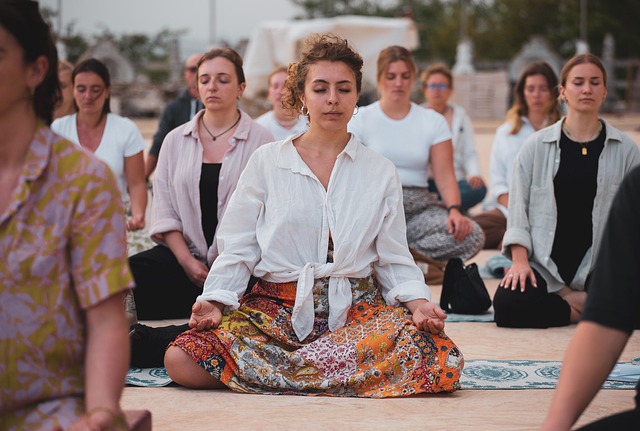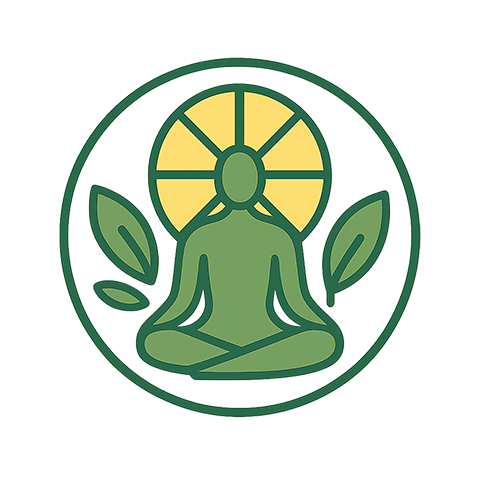
Guided Meditation for Digital Detox Balancing Technology and Humanity
In a world where smartphones glow in our pockets, social media notifications ping every hour, and the digital pulse never slows, finding quiet moments feels almost like a rebellion. A guided meditation offers a gentle, intentional pause that can recalibrate our relationship with technology. By consciously redirecting attention from screens to breath, sensations, and inner stillness, we create a space where human connection and presence can thrive alongside digital convenience.
The Digital Dilemma
The rapid spread of technology has brought unprecedented access to information, connectivity, and convenience. Yet, this same connectivity can become an endless stream of stimuli that fragments attention and saps emotional energy. The constant urge to check messages or scroll feeds can turn us into reactive beings rather than reflective ones. A guided meditation rooted in mindfulness helps counter this fragmentation by anchoring awareness in the present moment, making it easier to set boundaries and practice intentional tech use.
- Constant notifications create a state of hyperalertness that diminishes deep focus.
- Social media can cultivate comparison and diminish self‑esteem.
- Digital distractions impede the cultivation of empathy and compassionate listening.
The Science Behind Breath and Balance
Research in neuropsychology shows that slow, diaphragmatic breathing activates the parasympathetic nervous system, which governs rest, digestion, and recovery. In contrast, rapid, shallow breathing—often a by‑product of screen‑induced stress—triggers the sympathetic response, keeping the body in a heightened state of alertness. A guided meditation that focuses on rhythmic breathing can therefore recalibrate the autonomic nervous system, allowing technology to be integrated without overwhelming the mind.
“When you breathe consciously, you train the mind to stay in the present, resisting the urge to chase the next notification.” – Dr. Elena Ramirez, Cognitive Neuroscientist
Preparing for a Digital Detox Meditation
Before beginning a guided meditation, it helps to create a physical environment that supports stillness. Choose a quiet corner, dim the lights, and set a timer for your session. If you prefer, turn off electronic devices or enable airplane mode to eliminate external interruptions. Consider placing a small object—a smooth stone, a feather, or a candle—within arm’s reach to serve as a tactile anchor during the practice.
- Find a comfortable seated position; feet flat on the floor, spine erect yet relaxed.
- Close your eyes gently, allowing the lids to soften without closing completely.
- Take three deep breaths, inhaling through the nose and exhaling through the mouth, to signal the body that it is time to slow down.
Guided Meditation Script: Digital Detox Edition
Below is a short, easy-to‑follow script that you can read aloud or record. The focus is on breath, body sensations, and the gentle release of digital chatter.
Begin by taking a slow, full breath. As you inhale, imagine breathing in calm and clarity. As you exhale, let go of the urge to check your phone or mind‑wander to the next screen. Allow each breath to become a pause, a moment of stillness in a busy world.
Notice the sensations in your body: the weight of your shoulders, the rhythm of your heartbeat, the coolness of the air as it enters your nostrils. Feel the rise and fall of your chest as a reminder that you are present, not chasing external triggers.
With each exhale, imagine the digital noise receding like a wave. You are not rejecting technology; you are creating a protective buffer that lets you use digital tools with intention rather than reflex.
Integrating Technology Mindfully
After a guided meditation, you can approach digital engagement with a clearer perspective. Consider setting specific windows of time for checking emails or scrolling social media. Use the meditation as a baseline: whenever you feel the urge to reach for your device outside these windows, pause, breathe, and remind yourself of the calm you cultivated. This habit reduces the “notification reflex” and encourages deeper, more intentional interactions.
- App “focus mode” can silence non‑essential alerts during your chosen periods.
- Use “do not disturb” when engaging in face‑to‑face conversations to honor human presence.
- Schedule a daily meditation or mindfulness break—five minutes is enough to reset attention.
Long‑Term Benefits of Regular Guided Meditation
When practiced consistently, guided meditation can lead to measurable changes in brain structure and function. Neuroimaging studies show increased gray matter density in regions associated with emotion regulation and attention. Practitioners often report improved mood, reduced anxiety, and heightened empathy toward others. These benefits extend beyond the meditation cushion: they create a more balanced relationship with technology, enabling healthier choices that align with personal values.
“The practice of guided meditation serves as a mental checkpoint, ensuring that technology serves us, not the other way around.” – Maya L. Chen, Clinical Psychologist
Creating a Community of Digital Balance
While guided meditation can be a solitary practice, sharing the experience with friends or colleagues can amplify its impact. Consider organizing a weekly group meditation in a communal space or via a live audio session. Use the gathering to discuss challenges and successes in balancing technology use. By normalizing mindful tech habits, communities can develop supportive norms that make digital detox a sustainable lifestyle choice.
- Invite participants to bring their own devices but keep them muted.
- Start with a brief guided breathing exercise, then transition into a group discussion.
- Conclude with a collective affirmation: “We choose presence over constant connectivity.”
Self‑Reflection Prompt
After each guided meditation, take a moment to journal. Answer the following questions:
- What thoughts or feelings surfaced when I turned off my notifications?
- Did I notice a change in my focus or energy levels?
- How can I adjust my digital habits to support my well‑being?
Closing Thoughts
Guided meditation offers a simple, yet powerful tool to recalibrate the interplay between technology and humanity. By intentionally slowing our breath and redirecting attention, we create a sanctuary of presence that resists the pull of endless scrolling. Over time, this practice nurtures emotional resilience, strengthens human connections, and empowers us to wield digital tools with purpose rather than habit. Remember, the goal is not to abandon technology, but to integrate it thoughtfully, so that it enhances our lives without eclipsing the human experience.



